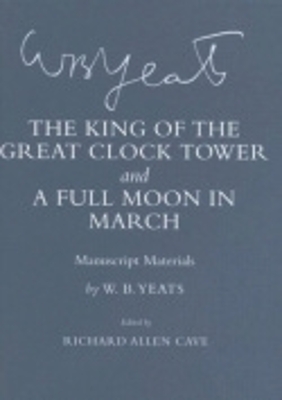"It takes years to get my plays right." So Yeats informed Margot Ruddock on October 11, 1934, from Rome, where he had begun to redraft The King of the Great Clock Tower to give her a role to act. In June of that year Yeats had begun to rewrite his first prose version of the play before it had even been staged (it was performed most successfully at the Abbey Theatre from July 30 that summer). Two versions of The King of the Great Clock Tower (one in prose and one in verse) and a new play, A Full Moon in March, derived from the first, were to emerge from a period of gestation that had started early in November 1933.
The composition of each play was fueled by Yeats's intense feeling for a woman. Both were performers: Ninette de Valois elected only to dance on stage and not to speak; Margot Ruddock was an actress possessed of a rich contralto voice who preferred not to dance (despite Yeats's most enduring description of her as his "sweet dancer"). Yeats devised strategies for each of his dance plays to meet these prescriptions. While admiration for de Valois's artistry helped to shape the first play, the second for Ruddock was the product of a deepening personal infatuation. The structure and content of the two plays and the differences between them reflect the wholly different emotions that stimulated their creation.
This volume of the Cornell Yeats contains manuscript materials for both the prose and verse renditions of The King of the Great Clock Tower and all of the drafts that resulted in A Full Moon in March. It also includes drafts of Yeats's prefaces and program notes for the plays, as well as staging information and cast photographs of the production of The King of the Great Clock Tower at the Abbey.
- ISBN10 0801446112
- ISBN13 9780801446115
- Publish Date 6 September 2007
- Publish Status Active
- Publish Country US
- Imprint Cornell University Press
- Format Hardcover
- Pages 448
- Language English
